By Major Anita Caldwell
Homelessness could involve my son, your sister, your father who just didn’t want you to know about their problem and didn’t want to be a burden to you. Homelessness is not caused by The Salvation Army or any other organization; but our goal is to end homelessness by all means possible. The homeless belong to Waco and McLennan County. They belong to all of us. They are the people created by God who walk a broken road. They are the broken souls of our community, our county.
While at our community kitchen, I had the privilege of interviewing five of our homeless citizens of Waco. They represented our veterans, college students, mentally ill and those waiting on disability. Here are their stories.
As a teenager, Ellen had experienced a difficult time and was sent to the Methodist Children’s Home. At age eighteen, she was released and with nowhere to go, she chose to live on the streets of Waco. As I sat with her on the green grass beside the Community Kitchen, I asked her how long she had been on the streets and her reply was ten years. She felt safe in Waco and besides, all her resources were located downtown including the food stamp office, the health center and her lawyer, who was working on her disability case due to a car accident. She said she really didn’t need The Salvation Army but appreciated the clothing we provide her from time to time. She wanted to talk with her grandfather, so I called him, but her grandmother had just had a stroke and he could not invite her to come home.
Bob is a veteran with PTSD. He admits that he can’t keep a job but says that he can hold signs for stores going out of business. He has family in Waco and this always brings him back home. He said that The Salvation Army was the only safe place to stay.
Jake has COPD and was approved for disability two years ago but so far had no received any support. All his resources are located downtown Waco, so he lives in his car and eats one meal a day at The Salvation Army while waiting for payments to begin. He worked all his life as a welder, but his illness no longer permitted him to work. He is angry with life and not open for much conversation.
Peter said that he was a foreign exchange student who left school and had been homeless for four months. All he wanted was a job, a bed, and a shower. He is only nineteen years old and had studied at TSTC. From his experience, there are just too many rules. He recognizes rules are not always easy and they are a choice necessary to reach goals.
Peter’s father had been a veteran but died and his mother is in a nursing home. He had lived with his parents in Waco much of his life, but that home had been sold. His greatest fear was the Illuminati who had set dogs to chase him and bite him. His one goal in life is to create signs that make people smile. I quickly realized that Peter would not be able to work but needed the care of PATH and Mental Health.
When these people cross the path of The Salvation Army, we encourage them to enter a true program for change. We invite PATH from MHMR to meet with those who are mentally ill. We contact our veteran’s liaison to meet with the veterans who need help (and we work together to find them housing when possible. If individuals are suffering from addiction, we offer to take them to a free Salvation Army six-month rehabilitation program. We provide safe shelter, hot meals, a place to shower, and refuge from the streets. Our case managers also provide guidance and work to identify the underlying cause of crisis, finding ways to resolve these issues and implement permanent solutions. Our goal is to help mend the broken road they’re on. Those we serve are created by God; they are His children. The Salvation Army is committed to meeting human need without discrimination and without judgement. We don’t ask their religion, heritage or orientation. Our call is to walk with them from a place of street life to permanent housing, regardless of what that might take in time or patience. Jesus asks that we care for the “least of these” as if it was Himself. This we will continue to do with honor, respect and diligence thanks to a supporting community which recognizes that the faces of our homeless, and how we care for them, reflects the character of our community and the character within ourselves.
 Major Anita Caldwell was born in Olean, NY, to a family of ministers. She attended and graduated from Kentucky Mountain Bible Institute with a BA in Religion. Her MA is in Pastoral Leadership from Olivet Nazarene University. She and her husband, Bradley Caldwell are Majors in The Salvation Army and are Regional Coordinators for this area. They have served as ministers of the gospel in The Salvation Army for 24 years. After serving in three USA appointments, they were transferred as Regional Leaders in Moldova, Romania, Russia and the country of Georgia over a twelve-year period. They received their Waco assignment after serving at International Headquarters in London, UK.
Major Anita Caldwell was born in Olean, NY, to a family of ministers. She attended and graduated from Kentucky Mountain Bible Institute with a BA in Religion. Her MA is in Pastoral Leadership from Olivet Nazarene University. She and her husband, Bradley Caldwell are Majors in The Salvation Army and are Regional Coordinators for this area. They have served as ministers of the gospel in The Salvation Army for 24 years. After serving in three USA appointments, they were transferred as Regional Leaders in Moldova, Romania, Russia and the country of Georgia over a twelve-year period. They received their Waco assignment after serving at International Headquarters in London, UK.
The Act Locally Waco blog publishes posts with a connection to these aspirations for Waco. If you are interested in writing for the Act Locally Waco Blog, please email [email protected] for more information.
*Names changed throughout to protect privacy.
(March 6, 2018 is the Joint Primary Election. Polls are open from 7 AM to 7 PM. For a list of polling sites, click here: McLennan County Election Day Voting Centers. If you are a registered voter in McLennan County, you can vote at any center, regardless of where you live. – ABT)
By Diamante Maya
The United States is a country that prides itself on being a democracy. We see it as so important that we like to help establish democracies in countries around the world. One of the most basic principles of a democracy is that the people vote for who they want to represent them in the government. Despite the importance we place on our value of being a democracy, we as a country have low voter turnout. In the 2016 Presidential election, 40% of the eligible voter population in the U.S. DID NOT show up to vote. And this was actually a higher voter turnout than has been the case in recent history.
I remember graduating high school, turning 18 and being able to vote. I remember how overwhelming it felt because I had never been taught how to vote. I had so many questions about the process. Am I registered? How do I register? What am I voting for? How do I pick who to vote for? It’s been almost two decades since I was 18 and I have yet to be taught how to vote. I’m not aware of any classes or how-to manuals on this. It wasn’t taught in high school and it’s not taught in college. Instead, I have had to teach myself.
When I lived in Los Angeles in my early 20’s, I remember receiving a booklet in the mail. I had not requested it. It just came automatically. I don’t know if the city sent it or not because I was not paying attention to that at the time. It was a non-partisan booklet and it would, for example, list a particular proposition and what those “for” say and what those “against” say. It was up to me to decide what I believed. I remember how much relief I felt receiving this booklet in the mail. Otherwise, I would not have known an election was happening or what it was about.
Then I moved to Waco and in the 8 years I have lived here, I have never automatically received a booklet in the mail to help me out. In fact, many times, I did not even know an election was happening. I had to be proactive to find out. The first year I was here, there was an election. I went online trying to find information and I clicked around trying to figure out what was on the ballot. I couldn’t figure it out and I consider myself quite adept at navigating the internet. I wrote to some friends that were more knowledgeable than I on the topic and they gave me a link to follow to the city website. I remember clicking on the link for a sample ballot and seeing a bunch of letters and numbers. It was not straight forward. I randomly clicked and it pulled up a ballot, but it only told me what was on the ballot. It did not tell me what each person stood for.
As I have talked to people, I have realized that my experience is not the exception. It appears to be the norm. Out of curiosity, I looked it up and discovered California had a 75% voter turn-out compared to Texas’ 43% in the 2016 Presidential Elections. These numbers vary each Presidential election, but stay in a similar range.
Fast forward to February of this year, 2018. I again asked if there was a useful, simple, comprehensive website. This time I asked some people from the League of Women Voters. Finally, finally, I was led to a website that I wished I had discovered many years ago when I turned 18. It’s a non-partisan, comprehensive, easy to navigate website that only requires your address. It gives some basic information on candidates and, for those that provide information; it gives you links to learn more about them. You can access it from your computer or your smart phone.
So, if you are like me and you would like a comprehensive, easy to navigate, website, I highly recommend www.vote411.org. Here are the questions the website answers:
- Am I registered to vote?
- Where can I vote?
- What if I can’t go in person?
- Who and what is on the ballot?
- What does each candidate stand for?
- What are the dates for voting?
- How do I register to vote?
In Texas, we don’t just receive information automatically in the mail about elections, unless it’s a candidate trying to get you to vote for them. It’s an area we could improve; however, until then, each of us has to be proactive. A democracy can’t possibly have representatives for the people if people do not show up to vote for who they want to represent them. Election Day for the primaries is March 6, 2018. Those candidates that get the most votes from each party will run against each other in the November elections. Check out www.vote411.org, exercise your right to participate in selecting who represents you in our government, and spread the word.
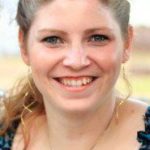 Diamante Maya is social worker by trade and a political activist by hobby. Inspired by the life of Jesus, she is an advocate for the marginalized in society.
Diamante Maya is social worker by trade and a political activist by hobby. Inspired by the life of Jesus, she is an advocate for the marginalized in society.
(In this post Rudy Solano shares thoughts and memories about the neighborhood where he grew up, known to those who lived there as “La Calle Dos.” If you would like to learn more about La Calle Dos, you may enjoy this link from the Waco History Project: Calle Dos. – ALW)
By Rudy Solano
Some years ago, one of the early astronauts was interviewed about his experiences in space. I am paraphrasing, but the interviewer asked him: “What did you feel when you went up in space and saw what no other person had ever seen—planet Earth from that perspective?” “What was going through your mind?” His answer, so simple but so meaningful, has stayed with me all these years. The astronaut thought about the question for a moment and then replied, “I couldn’t get over the feeling that our planet Earth looked so small. “ “That in the vast universe this tiny little speck was our home and we all lived here!” Implicit was the notion that we all must learn to get along with each other.
From time to time I have visited the small corner of the world that we affectionately called “La Calle Dos”—we moved away in 1950. Invariably, I am overcome by similar feelings. I ask myself: Did we really live here in this tiny little space? Could this be the same place where all those homes used to be? Where are all the people lived? Trying to orient myself, I look for something familiar. I should be standing where Don Marcial’s grocery store was, I tell myself. Instead, I am confronted by an immense building complex covering an area where several neighborhoods would have been. The large marquee by the road tells me this is now a middle school named Indian Springs.
In a way, “La Calle Dos” is a misnomer. Although the phrase literally means “Two Street,” or “Second Street,” in Spanish, the name came to represent an amorphous area that around the 1900’s became an enclave for primarily –but not exclusively–immigrants of Mexican descent. The red-light district of Mollie Adams notoriety gradually gave way to families of modest means who were seeking to provide for their families as best they could. In the case of my maternal grandfather, who was born in Aguascalientes, Jesus Maria, Mexico, all his children (with the exception of an infant daughter who stayed with her grandmother in Mexico) were born in the United States. During the years that we lived there, a preponderance of the residents were Mexican, Latin, Latino, Hispanos, Hispanics, Chicanos—take your pick—and several Negro, Black or African-American families. We were also blessed with at least one American Indian family and an Anglo-American, who– as far as I know– was single. Mr. Cooper, as we referred to him, was an entrepreneur—a one-man Lipsitz*, buying scrap metal, rags, bottles or any article of value.
La Calle Dos, was by financial measures, a place of modest circumstances. By a curious coincidence, as I write this I am reading a book titled Being Rapoport, Capitalist with a Conscience. Mr. Rapoport, a Waco icon who founded the Audrey and Bernard Rapoport Foundation, traces his roots to a very humble beginning. His father, an immigrant from Russia, was a street peddler on the streets of San Antonio, Texas. This man of great renown, who was known to have conversations with people in the White House, to be a personal friend of ambassadors and powerful people in politics and business, never lost that precious virtue so rare and so highly prized: humility.
Referring to the ethnic makeup of our old neighborhood, I have always believed that this experience, limited as it was– with African-Americans in particular– served me well in later years in the Community Relations Division of the Waco Police Department.
Reminiscing about the years I spent in La Calle Dos as a youth, I am aware that some might wonder why this ordinary-seeming place could be considered special at all. It is a fair question. Assuming agreement on two basic points, I would gladly attempt an answer by sharing my thoughts. The two presuppositions would be: One, that we are all the same, different and unique. Two, that Will Rogers had a valid point when he stated, “We are all ignorant; only about different topics.”
Few people outside of our family and a small circle of friends have ever heard of Martin C. Solano. I am aware of two separate monuments that bear his name. At Rosemound Cemetery a small granite tombstone quietly announces to the visitor:
Here rest the remains of
Juanita Colmenero Solano
Died Oct 17, 1930
at the age of forty
Rest in Peace
A remembrance from her son
Martin Solano
At St. Francis of the Brazos Church are fourteen large wall sized murals that mark the Catholic “Stations of the Cross.” The seventh mural, which was donated to the church by my grandfather, has a small plaque on the bottom that reads: “In memory of Martin Solano.”
By most l accounts Martin Solano was a caring person who loved life. At the height of the Great Depression he told his sister, my Aunt Jessie, “Don’t you worry none, I’m going to take care of you.”
He was a boxer. He was in the Civilian Conservation Corps with another Wacoan, Nieves Rodriguez. Joe Nieves Rodriguez, who later became a Waco police officer, graduated from the FBI Academy and retired with the rank of Assistant Chief of Police, related to me that Uncle Martin had helped him out of a tough spot while in the CCC. It seems that Captain Joe was boxing with another person and getting the worst end of it. Thanks to my Uncle Martin giving him some timely tips about his opponent, he said, he was able to come out on top.
Like countless others, Uncle Martin was called to serve his country after the consequential bombing of a faraway place called Pearl Harbor. The only time I remember seeing my uncle alive was when he knelt on the bare wooden floor at 538 North Second Street to receive his father’s blessing. My mother recalled that, on the eve of his departure, her brother was saying goodbye to his friends, playing the guitar and singing a popular song of the day, “El Soldado Razo,” a plaintive song about a young man going to war who is ready to die for his country, but laments leaving his mother behind.
Uncle Martin entered the service on July 4, 1942, and remained on active duty until he was mortally wounded by an enemy hand grenade in an Italian campaign. He succumbed to his injuries in a California veterans’ hospital. On April 30, 1945, PFC Martin Colmenero Solano of Co. F, 349th Infantry gave up the spirit. Another native son had been sacrificed as fodder for a cruel and senseless war that shook the global village to its foundation. By an ironic twist of fate, on that same date, 5,280 miles away, a man named Adolph Hitler inside a Berlin bunker died as well. This is part of what gives La Calle Dos relevance. At Oakwood Cemetery in Waco, Texas, a monument marks the gravesite of a Texas son who died too soon and came from a place called La Calle Dos. Our family and a few friends mourn his loss yet.
I see the river–El Rio Los Brazos de Dios—Spanish for “the arms of God.” It’s still there, I think to myself, somewhat amused at my unspoken reaction. Looking westward, I spy another familiar sight, the Spanish mission, San Francisco de Assisi. I don’t remember it being so close! St Francis is on Third and Jefferson Street. There is Jefferson Street. So, if I follow it till it meets up with the Brazos River…Yes! There it is! I cannot believe my eyes. La Pila! The artesian water fountain we called La Pila (Spanish for “basin”) is still there! It’s been covered over, but part of it is still visible. I don’t remember that pecan tree growing almost on top of it. Riverside Drive, now called University-Parks, is virtually at the outer rim of the fountain, encroaching into what was once a large lawn area. The lawn around the water fountain, always green and well-maintained, extended farther out to First Street. Through the years, I am almost sure, the Brazos River (now renamed Lake Brazos) has eroded the bank, forcing the road to be constructed closer to the fountain.
Standing at the Pila site, several Waco historical landmarks are within view. A few hundred yards away is the suspension bridge designed by the same person who designed the famed Brooklyn Bridge, the bridge that was a crossing for the Chisholm Trail cattle drives of the storied wild West. Literally a few feet away from the bridge is located a freshwater spring in the aptly named Indian Springs Park. This was a source of fresh water for the Huaco Indians (from which the name “Waco” derives). Finally, the viewer can see the building which was the tallest structure West of the Mississippi River when it was built. We called this building “la veintidos.” Why? Probably because the Alico building is twenty-two stories high and veintidos means 22 in Spanish.
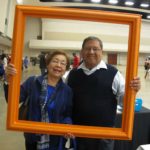 Rudy Solano is retired from the City of Waco. During his career at the City of Waco his role included Community Relations Specialist for the Police Department a position he treasured. He and his wife Adela are Waco natives where they raised their four children. He is a proud husband, father, and grandpa!
Rudy Solano is retired from the City of Waco. During his career at the City of Waco his role included Community Relations Specialist for the Police Department a position he treasured. He and his wife Adela are Waco natives where they raised their four children. He is a proud husband, father, and grandpa!
*The Lipsitz Scrap Metal Company is a well-known, highly successful Waco business known for its philanthropy and many civic endeavors.
By Rachel E. Pate
Located on the Quinn Campus in the heart of east Waco, Esther’s Closet promotes empowerment, education and provides a much-needed resource to the women of the city. Launched on March 29, 2016, Esther’s Closet is a self-sufficiency program that assists unemployed women in preparing for interviews and entering the workforce by providing no-cost, professional clothing. Esther’s Closet clients are suited with a complete head-to-toe professional look for job interviews and 7 to 10 days of outfits for new employment. Clients who maintain steady employment are eligible to receive two additional outfits quarterly. Workwear options include business professional attire, medical scrubs and restaurant/retail clothing. In addition to providing employment wear, the program also offers resume writing and job performance skills to help women. To date, the program has assisted 334 women and provided 1,069 outfits.
As the Esther’s Closet Coordinator, I have a great deal of interaction with our clients. Our program’s numbers are a testament to our impact in the community, however they do not reveal the many faces and testimonies of these wonderful women. Some are single, proud moms, sole providers, just starting out, ready to start over, coming back, building up, etc. I’ve shared in countless tearful moments with clients on my office sofa discussing the obstacles we have overcome and those we still face. I’ve calmed the nervousness in the dressing room while helping someone prepare for a job interview in less than 30 minutes. I even taught a client how to properly apply her makeup for the first time by doing a side-by-side tutorial in the mirror. Being able to give my sincerest service and watching others’ confidence bloom before my eyes is a blessing to behold.
My passion is helping every client uncover her business fierceness; the ability to see herself be anything and do anything. When clients visit our office for the first time, they’re never quite sure what to expect. When they’re greeted by our professional staff, given a tour and shown to our boutique, their anxiety seems to subside a bit and is replaced with awe and excitement.
Our racks are filled with fashionable finds that make the suiting experience an easy one to get into. I often take the time to act as a personal shopper; finding the right sizes, shades and shapes to flatter clients’ frames. From baubles and belts to skirts and scrubs, Esther’s Closet has everything to send our clients out of our doors feeling empowered to take on the work world. One client felt so great about her new outfit, she wore it out of our office to her interview and forgot her own clothes in our dressing room for a few days!
I often speak from my heart and share my own testimony with my clients. I can relate to what it’s like to search for a new opportunity in life, only to be met with socioeconomic setbacks and hardships. As a new mom, some time ago, I found myself walking through the doors of my first post-partum interview, and I had no idea how ill-prepared I was with my outfit. I wore a comfortable blouse with dark denim slacks and my lucky, leather Chuck Taylor’s… Most employers might’ve interviewed me and never called back, but fortunately this interviewer pointed out that I wasn’t very professionally dressed. That moment changed my perception. That sincere observation and audacious statement helped me realize the invaluable importance of dressing for a successful first business impression. I decided then that if the company ever called me back, I would most assuredly show them just how professional I could be. A little over a month I received a call back, and I seized my opportunity. That same interviewer was highly impressed with my charm, knowledge and experience. This was all while I was wearing a tailored black suit with pumps and carrying a briefcase. I’d discovered my own business fierce, and I landed the job.
There’s just something about helping one another that appeals to the very best parts of our nature. It gives you an outlet for love and an inlet for hope. Every day I walk through the doors of Esther’s Closet, I’m granted with yet another opportunity to see how empowering someone else makes me and the nature and soul of our community much more hopeful- one outfit at a time.
 Rachel E. Pate is a native Wacoan and University High School alum. She currently works as the Public Relations person for the Cen-Tex African American Chamber of Commerce and serves as Coordinator for the Esther’s Closet program for women. She’s also a proud mom of one, lifelong member of Toliver Chapel (TCMBC) Church, graduate of the LeadershipPlenty Institute, lover of the great outdoors, an avid basketball fan and a dedicated wearer of Converse’s Chuck Taylor shoes.
Rachel E. Pate is a native Wacoan and University High School alum. She currently works as the Public Relations person for the Cen-Tex African American Chamber of Commerce and serves as Coordinator for the Esther’s Closet program for women. She’s also a proud mom of one, lifelong member of Toliver Chapel (TCMBC) Church, graduate of the LeadershipPlenty Institute, lover of the great outdoors, an avid basketball fan and a dedicated wearer of Converse’s Chuck Taylor shoes.
The Act Locally Waco blog publishes posts with a connection to these aspirations for Waco. If you are interested in writing for the Act Locally Waco Blog, please email [email protected] for more information.
By Allison Abel
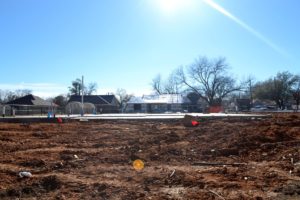
New construction at Legacy Square
I work at a local, non-profit organization called NeighborWorks Waco. Our primary mission is to build stronger neighborhoods. Developing affordable homes in neighborhoods that are good candidates for revitalization is one of our main programs. Our newest project is a small subdivision located on Hood and Turner streets in East Waco, across from East Waco Park. Four homes have already been built and are already occupied by wonderful homeowners. Four additional homes are currently under construction, and another four homes are planned for future development. We named this new subdivision, “Legacy Square.”
When we chose the name “Legacy Square,” we had no idea what a powerful legacy this little piece of land already represented. We chose the name “Legacy Square” for the legacy our clients wish to leave to their children. With the help of a little research, however, the name “Legacy Square” has taken on an additional rich level of meaning for us.
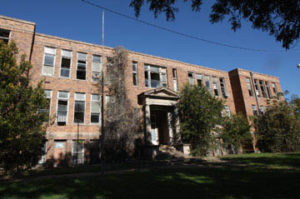
old R.L. Smith School building before it was torn down
Before Legacy Square was filled with smiling families and welcoming front porches… before the bricks, beams, and nails of construction… before the land was cleared, and even before the idea of a new housing addition was developed – it was the location of a dilapidated building: The R.L. Smith School. Some of our readers may remember this school. Some may have even personally attended R.L. Smith. This building, erected in 1913, went by different names and served the community in a variety of capacities over the last century.
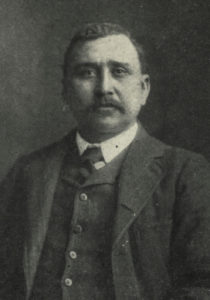
Robert Lloyd Smith
Our focus, though, is not on the school itself, but on its namesake – R.L. Smith. Unless you are a historian, you may not have heard this name. Once you hear a little more about this amazing man’s legacy, you’ll understand why we are so excited to share in this bit of history.
Robert Lloyd Smith was born in 1861 a free black man in Charleston, South Carolina. He was well-educated. He attended the public schools available in Charleston. Then he attended the University of South Carolina, planning to major in mathematics. However, during his time at USC, legislature closed the university to African-Americans. Smith transferred to Atlanta University, acquired a bachelor’s degree, and began a career of teaching.
Eventually, R. L. Smith left South Carolina for Oakland, Texas, a small cotton farming community about halfway between Houston and San Antonio. Smith quickly realized that a sizable African-American population lived in Oakland. He also discovered that only a small portion of this population owned their own homes and all were living with very few municipal services available to them.

Group photo of the Farmers Improvement Society
After identifying this social issue, he went to work, seeking solutions for the African-Americans living in Texas. Eventually, he discovered an article entitled “Youth’s Companion.” The author presented a case study of how a self-improvement society in New England changed the lives of its participants. Smith thought to himself “how much more necessary [a self-improvement society] was for a people who had just come out of the house of bondage.” That same year, he established the Farmers Improvement Society.
Hopefully, we haven’t lost you in this story yet because you have just made it to the best part – the incredible change that ensued following the creation of Smith’s society. The Village Improvement Society began first with a goal of beautifying their homes and neighborhoods. In short, Smith singlehandedly created a group that would transform the “black side” of Oakland.
Roofs? Repaired.
Houses? Repainted.
Landscaping? Planted.
Fences? Rebuilt.
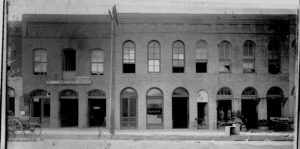
Farmer’s Improvement Bank on Bridge Street (Current location of the Waco Convention Center)
More than community beautification, though, Smith also established a school, a bank, and other services specifically for the African-American population. The Farmers’ Improvement Bank was right here in Waco – on Bridge Street, where the Convention Center now stands.
Smith strongly believed in and encouraged the philosophy of economic self-sufficiency, especially in the African-American community. He believed the greatest traits achievable were thrift, industry, and economy.
R.L. Smith’s legacy touched many people around the country. At its high point in 1911, the Farmers’ Improvement Society claimed 12,000 members in 800 branches across Texas, Oklahoma, and Arkansas. Although we only recently discovered the story of R.L. Smith, after we had already named Legacy Square, we are proud to carry on the legacy of this great and influential man.
Today, Smith’s legacy – one of growth and development – continues to flourish! NeighborWorks Waco strives toward many of the same principles R.L. Smith encouraged over 100 years ago – economic self-sufficiency, neighborhood beautification, and the growth of East Waco. Our hope is that through the development and construction of Legacy Square, the rehabilitation of houses in the area, and the spurring of economic development, NeighborWorks Waco is living into the legacy of Robert Lloyd Smith.
 This Act Locally Waco blog post was written by Allison Abel. Allison is the Homeownership Center Manager at NeighborWorks Waco. She received her Bachelor’s degree in Child and Family Studies from Baylor University and is currently working on a Master’s in Public Administration. A Waco native, Allison enjoys life by connecting with family and friends, reading any novel she can find, and enjoying downtown Waco with her pup, Ollie.
This Act Locally Waco blog post was written by Allison Abel. Allison is the Homeownership Center Manager at NeighborWorks Waco. She received her Bachelor’s degree in Child and Family Studies from Baylor University and is currently working on a Master’s in Public Administration. A Waco native, Allison enjoys life by connecting with family and friends, reading any novel she can find, and enjoying downtown Waco with her pup, Ollie.
NeighborWorks Waco is not for profit organization focused on building stronger neighborhoods through homeownership, quality rental housing and community-building initiatives. NeighborWorks Waco’s vision is that through NeighborWorks Waco and its collaborations, the Central Texas area is filled with vibrant, thriving communities. Online: nw-waco.org
(This piece was first published on the Baylor School of Education blog “Instant Impact.” – ALW)
by Taylor Ward
Results from the first three years of the Baylor School of Education’s EnAbled for College program show that high-school students working with trained mentors are reaching the next level of education.
Research has proven that at-risk and disabled high school students are less likely to pursue a post-secondary education. And without that education, many continue to live below the poverty line.
The Baylor School of Education’s Department of Educational Psychology is working to change that with a grant from the AT&T Foundation. Through the EnAbled for College mentorship program, now in its fourth year, Baylor graduate students mentor high-school students in the greater Waco community.
EnAbled for College serves about 50 high schoolers each year, and 100 percent of the program participants who graduated in May 2017 applied to a post-secondary educational institution. Of those seniors who applied, 97 percent were accepted to college.
The project began in 2014, modeled after the AT&T Foundation Building a Grad Nation campaign. In its first three years, the EnAbled for College program served:
- 151 students in McLennan County in Central Texas
- 48 percent of those students had a disability,
- 71 percent were from low socioeconomic homes, and
- 74 percent were first generation students.
Baylor’s Dr. Tamara Hodges spearheads the project as a co-principal investigator for the AT&T grant. She is a senior lecturer in the Department of Educational Psychology, a licensed psychologist and a Licensed Specialist in School Psychology.
“These kids couldn’t see past high school,” Hodges said. “I think the crux and the heart of this program is watching people’s lives change — knowing the significant obstacles facing some of these kids and now knowing that they are in college? That’s success.”
During the program’s first three years, mentors were spread across six different high school campuses. For the 2017-2018 school year, the EnAbled for College program is focused on two local high schools in McGregor ISD and Waco ISD.
The program seeks to serve:
- Low-Income Students
- Minority Students
- Students with Disabilities
- English Language Learners
- Low-Graduation-Rate High Schools
Dr. Terrill Saxon, Interim Dean for the School of Education, is co-principal investigator and has worked with EnAbled for College since its inception.
“These kids are viewed by their teachers, principals and counselors as having great academic potential, but they need additional resources in order to make their post-secondary dreams a reality,” Saxon said. “It has been a wonderful experience seeing it grow into a project that directly benefits local high-school students.”
Mentors are the heart of the program because of the relationships they build with their students. Each mentor works with 10 to 20 students, and they meet with them in one-on-one sessions as well as in group settings at least once a week. They discuss everything from how to fill out a college application to how to deal with the Free Application for Federal Student Aid (FAFSA).
“Like many of the students I mentor, I didn’t have the available resources to guide me toward pursuing post-secondary education,” said student mentor Crystal Posada, a master’s student in Educational Psychology. “As a first-generation student, I was clueless about college and everything it had to offer. I am excited to be that someone for these students and help them see a future past their high school graduation.”
The mentors benefit from the EnAbled for College program as well. Through the AT&T grant program, 22 graduate students in the Department of Educational Psychology have worked as mentors.
“Mentoring has highlighted the challenges that many of my students face, but it has also shown me just how capable, motivated and deserving they are,” said mentor Jacy Latta, a graduate student pursuing an Educational Specialist degree in School Psychology. “Walking alongside them as they prepare for their future has changed my life, and hopefully it’s empowering them to be seekers of positive change for themselves and for their communities.”
And Dr. Hodges is determined to see the success of the program.
“The way out of poverty is through education,” she said.
 Taylor Ward is a senior journalism, public relations major at Baylor University. Taylor is a United States Air Force military brat and has lived in six different places while growing up until her father retired to Cibolo, TX where she graduated high school.
Taylor Ward is a senior journalism, public relations major at Baylor University. Taylor is a United States Air Force military brat and has lived in six different places while growing up until her father retired to Cibolo, TX where she graduated high school.
By Lauren Paczynski
Are you looking to redecorate, or just prowling for that perfect statement piece for your home? Are traditional furniture stores not really your style? Then this post is for you— the shabby-chic shoppers, the junk junkies, and the antique aficionados. Whether you’re looking for vintage finds, antique treasures, or “junque,” there are tons of local shops for you to explore. In this blog post, I’ll be giving you a rundown of five of them— all located along LaSalle Avenue.
Shades of Shabby — Refurbished Home Goods and Farmhouse Chic
Shades of Shabby is a cute and cozy little furniture store that specializes in refurbished and found furniture. Before you head inside, take a peek at the side of the building— there’s an adorable little mural there reading “Dear Waco, we love you!” (A perfect spot to snap a quick selfie!)
When you first walk in the door, you will be greeted by the scent of gently glowing magnolia candles and the sight of cotton bouquets and old, distressed wood. Among the items available when I last visited were vintage-style floral dishware, woodsy-industrial light fixtures, and made-to-order farmhouse style tables. Many of the pieces here are, as I said, refurbished— old wood has been painted or white-washed and gently distressed, giving it that much loved “shabby-chic” look. If that’s your thing, definitely pay them a visit! Shades of Shabby has a wonderful selection of beautifully crafted pieces. If, however, you prefer that old wood before it’s been repainted— read on!
Hours: 10am-5pm Tuesday through Saturday
Junque in the Trunk — Rustic and Quirky
Next on our list is Junque in the Trunk— while they carry some similar pieces to Shades of Shabby, there’s a bit more in the way of rustic and quirky furniture here. You’ll still find some great repainted pieces here (great for those of you who love that vintage style but prefer a cleaner look), but there are also plenty of mostly-intact found pieces, as well as decorations and furniture with a more industrial flair.
Among my favorite finds when I visited were light fixtures crafted from old brass pipes, a pair of vintage roller skates, and a variety of old typewriters. You’ll find no shortage of conversation starters and statement pieces here! Aside from decorative items, the shop also offers made-to-order farm tables, as well as miscellaneous items like hand-crafted soaps and candles and raw local honey.
Hours: 10am-5pm Thursday through Saturday, 12-5pm Sunday
Riverside Relics — Retro, Vintage, and Collectibles
Riverside Relics is a treasure trove of retro and collectible items— walking a winding path through shelves and tables full of knick-knacks and vintage goods, I discovered stacks of old magazines, vinyl, and baseball cards. Aside from the collectables, I also spotted a retro TV (probably from the late 50s or 60s) in good condition, an old 8-track player, and an assortment of cash registers.
The shop also carries a variety of furniture items, and there’s a whole yard out back full of old bird cages and salvaged wood. I’ll also say that, although the staff at every shop I visited were perfectly helpful and friendly, the staff at Riverside Relics were probably the warmest and most interested in having a conversation. So, if you’re looking for somewhere where you can have both a great shopping experience and an engaging conversation, I recommend paying Riverside Relics a visit!
Hours: 10am-5pm Thursday through Saturday, 1-5pm Sunday
Junky Monkey — Clothes, Knick-Knacks, and DIY Supplies
When you first walk in the door, Junky Monkey seems like less of a furniture shop and more of a place to snag some smaller decorative items or unique clothing pieces. Which is well and good, but don’t let that fool you. Make sure to go up the stairs through the door at the back— there’s a whole other section of the shop back there, full of old appliances waiting to be gutted and reused, fantastic found furniture and decorative items.
Now for my favorite part— past that second area, back out in the open air, is a yard crammed full of DIY supplies. Countless old doors, ladders, windows, scraps of salvaged wood and metal, and much more. There are tons of places to look for vintage and shabby furniture, but if what you’re really looking for is the materials to craft your own, this is where you want to be.
Hours: 10am-5pm Monday-Saturday
LaSalle Shoppes — True Antique Market
Last but most certainly not least is LaSalle Shoppes. What might at first look like a row of separate stores, this pink building is actually home to one gigantic antique shop, stocked by over 70 individual vendors. As someone who absolutely loves wandering the halls of antique malls and sorting through vintage salt-shakers, old velvet armchairs, and iridescent glassware, this was my personal favorite of the shops I visited.
This is the only shop on the list that I would title a “true antique market.” While most of the LaSalle vintage shops are more like small boutiques (tending towards that shabby-chic, Magnolia-style aesthetic) LaSalle shops has the quirky, warm, slightly dusty atmosphere I’ve come to expect when I think of antique stores. Among the treasures I uncovered here were two very old carousel horses, baskets full of stray baby doll limbs, vintage clothing and furs, a case full of costume jewelry, and a plethora of toys and collectibles. They also had the largest selection of vinyl of any of the shops I visited.
If, like me, you’re more interested in shuffling through shelves of oddities than hunting for specific furniture items, this is definitely where I’d start. And make sure to set a little time aside— there’s a lot to look at!
Hours: 10am-6pm Tuesday-Friday, 10am-5pm Saturday & Sunday
 This Act Locally Waco Blog post was written by Lauren Paczynski. Lauren is a Senior at Baylor University, studying Professional Writing. A Virginia native, she moved to Texas in 2014 to attend Baylor and intends to stay here (at least for a while). After graduation, she hopes to work in editing & publishing. The Act Locally Waco blog publishes posts with a connection to these aspirations for Waco. If you are interested in writing for the Act Locally Waco Blog, please email [email protected] for more information.
This Act Locally Waco Blog post was written by Lauren Paczynski. Lauren is a Senior at Baylor University, studying Professional Writing. A Virginia native, she moved to Texas in 2014 to attend Baylor and intends to stay here (at least for a while). After graduation, she hopes to work in editing & publishing. The Act Locally Waco blog publishes posts with a connection to these aspirations for Waco. If you are interested in writing for the Act Locally Waco Blog, please email [email protected] for more information.
Waco ISD Superintendent Dr. Marcus Nelson has declared literacy to be one of the top goals for our school district. We all have a part to play in making sure our children grow to be terrific readers! Act Locally Waco is looking for a way to help. We have come up with an experiment. We hope you will join us.
For now, we are going to focus on “sight words.” Sight words are commonly used words that children need to memorize so that they recognize them and can say them easily and automatically. Throughout this semester, we will share lists of sight words with you to work on with the children in your life.
Teaching sight words is as easy as writing the words on index cards or scrap paper and reviewing them with children flashcard style. We will also be sharing short stories that use sight words from the list. You can use these stories to practice the words with the kids you know.
This week we are using some of the words on the First Grade Sight Word List. Here are links to the stories we have posted so far, if you would like to print it out for your child to read or illustrate:
- The Bad Friends.
- Don’t eat me, Monster!
- Rosie Likes to Ride Around
- How Living at the Zoo Leads to Trouble
Do you have ideas about how to make this project better or more fun? Would you like to submit a story using some of the sight words? Would you like to illustrate a story? Email [email protected] with your ideas.
Together we will make Wacotown a Reading town! #readlocallywaco!
 This Act Locally Waco blog post is by Ashley Bean Thornton, she has lived in Waco almost 20 years now. Far longer than she ever lived anywhere else. She likes to walk. If you see her out walking, honk and wave and say “hi!”
This Act Locally Waco blog post is by Ashley Bean Thornton, she has lived in Waco almost 20 years now. Far longer than she ever lived anywhere else. She likes to walk. If you see her out walking, honk and wave and say “hi!”
The Act Locally Waco blog publishes posts with a connection to these aspirations for Waco. If you are interested in writing for the Act Locally Waco Blog, please email [email protected] for more information.
By Josh Caballero
Most of us have picked up a book to read to or with someone else at some point in our life. We have read to our children, younger siblings, nieces and nephews. We have grabbed the newspaper or our phone and read a section to our spouse, colleague or friend. We can remember grabbing a book and reading along in school as a teacher read to us. These simple moments seem exactly that—simple. Yet we often forget this when we are asked to consider volunteering to read to children at a school. We think it takes a certain type of person with some sort of specialty in reading and other skills that we don’t have. We think, “I don’t have a teaching background or know how to work with kids. I wouldn’t know where to begin to help children improve their reading.”
If I’m honest, I’m not sure that I often know where to begin when helping a kid to read, but I can tell you what it looks like for me and the volunteers Waco CDC works with at various campuses:
Every week, one day a week, I take my lunch break to drive to West Avenue Elementary School. I arrive and say hi to the clerk in the front office and get signed in. Then I go to the counselor’s office to select books for my group to read. Once I have the books selected, I go to the cafeteria to wait on my students to grab their lunch. When they see me, they smile and wave and move to the front of the line. After they have their lunch trays we go to our reading area. We sit down and as they eat their lunch, they talk about things that are happening that week, what they’re learning in school, and what they think the book I’ve picked for us will be about based on the cover. Once we’ve done this we begin to read while they finish eating. Usually, we take turns reading. If they struggle at certain points I help them to slow down, sound out different words, and teach them the definition of words they haven’t read before. Sometimes I read to them and have them follow along. Other times they do all the reading. We’ll work on recognizing words on flash cards or make up our own story with the pictures in the book. When our time is up, we go back to the cafeteria to throw away their lunch trash and they join their classmates to go back to class.
Right now, there are almost 20 mentors reading at West Avenue Elementary School, more than 70 at Brook Avenue Elementary School, and nearly 10 at JH Hines Elementary School. The reality is that it does take a very specific type of person with a particular skill set to be a reading club volunteer. It takes a caring adult who is willing to be committed to give up a small portion of their time each week to get to know a kid while they sit and simply read together. If this sounds like you and you’re interested in being a reading club volunteer, please contact Josh Caballero at [email protected]
If you would like more information about mentoring opportunities in Waco, don’t hesitate to reach out to Jillian Jones with the Prosper Waco team. You can contact her by sending an email to [email protected], or completing this form on the Prosper Waco website.
 Josh Caballero is a community organizer in North Waco for Waco Community Development and works closely with local schools, churches, businesses, and residents in the Brook Oaks and Sanger Heights neighborhoods. Originally from the panhandle of Texas, Josh has been a Wacoan for 12 years and enjoys living in the Sanger Heights neighborhood with his wife Jennifer and daughter Millee Grace.
Josh Caballero is a community organizer in North Waco for Waco Community Development and works closely with local schools, churches, businesses, and residents in the Brook Oaks and Sanger Heights neighborhoods. Originally from the panhandle of Texas, Josh has been a Wacoan for 12 years and enjoys living in the Sanger Heights neighborhood with his wife Jennifer and daughter Millee Grace.
By Melody Terrell
Are you worried about children in your family with learning challenges? Have you been frustrated over the lack of services in the schools? It’s time to forget those past experiences. Today is the day to head back up to the schoolhouse for a word with the teacher, counselor, or principal. Our schools want to do the right thing and now is a great time to ask again. Texas is in the news (again) for problems related to identifying and serving children with disabilities. This sounds like bad news, but there is good news that goes with it.
We can’t change the past, but as a veteran teacher and instructional specialist, I know the schools are full of good people who want to help your child. No one goes into education to do an ‘okay’ job. We all start starry-eyed and eager. Education professionals are mostly doing the best they can with what they’ve got. Frustration with suggested “caps”, lack of funding, and inconsistent direction has stalled the quality of services for students. Problems with identification and services can change based on the attention this issue is getting in Texas right now.
Conditions that qualify for special education include autism, blindness, deafness, emotional disturbance, hearing impairment, intellectual disability, multiple disabilities, and orthopedic impairment. But there’s more. Some children do not qualify based on those categories but have other conditions which affect a life activity. ADHD and Dyslexia are high frequency disabilities that certainly affect life activities such as reading, learning, and/or caring for self. These children may qualify for other protections under the law. Section 504 of the Rehabilitation Act of 1973 requires that the needs of students with disabilities be adequately met. Section 504 of this important document requires public school districts to provide a ‘Free Appropriate Public Education’ (FAPE) including identification, appropriate needed services in regular or special education, and related aids to help with learning.
I am most familiar with dyslexia. The International Dyslexia Association estimates that 1 in 5 people are born with this brain-based learning difference. Dyslexia, a print-based learning difference, is seriously under-identified in Texas. Students with dyslexia need classroom accommodations and multi-sensory structured language lessons. Small group tutoring is not the same remediation. This translates to money spent on training and a strong core of professionals to provide this service. Done well, this 2-3 year service can make a lifetime of difference to a non-reader. Simple accommodations such as photographing assignments on the board with a smart phone are easy. Pen devices that scan and read lines of text cost more, but offer independence and dignity for the individual. Other conditions have similar services and learning aids which can help if supported by The Texas Education Agency and school administrators.
How we treat students with disabilities is in the news. The governor and the Texas Education Agency are on it. Traditional public schools and public charter schools will be taking a close look at improving. Private schools are not held to the same requirements, but many in the Waco area are faith-based. Perhaps there will be conversations about ministry to families who feel beaten down by learning differences.
The most important adult in this mix is the parent or guardian. If you have been asking for help, keep asking. Send a letter to the principal then to the director of special education if you are not getting help. Always try to work with the school first and remember that you are on the same team. It can be frustrating, but do not stop asking questions and seeking help. Your child’s future depends on it. School attendance alone will not help a child with a learning disability succeed. The right intervention and classroom support can be incredibly effective.
For more information:
- U.S. Department of Education – “Protecting Students With Disabilities” – https://www2.ed.gov/about/offices/list/ocr/504faq.html
- Texas Education Agency Dyslexia Handbook 2014 – https://tea.texas.gov/academics/dyslexia/
- International Dyslexia Association – https://dyslexiaida.org
- Learning Disabilities Association – https://ldaamerica.org
- Academic Language Therapy Association – https://www.altaread.org
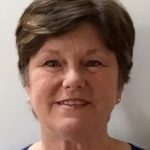 Melody Terrell is a retired public educator and a part-time private dyslexia therapist. She is certified in special education and gifted education. She is the parent of grown children with learning differences who now advocate for themselves.
Melody Terrell is a retired public educator and a part-time private dyslexia therapist. She is certified in special education and gifted education. She is the parent of grown children with learning differences who now advocate for themselves.
